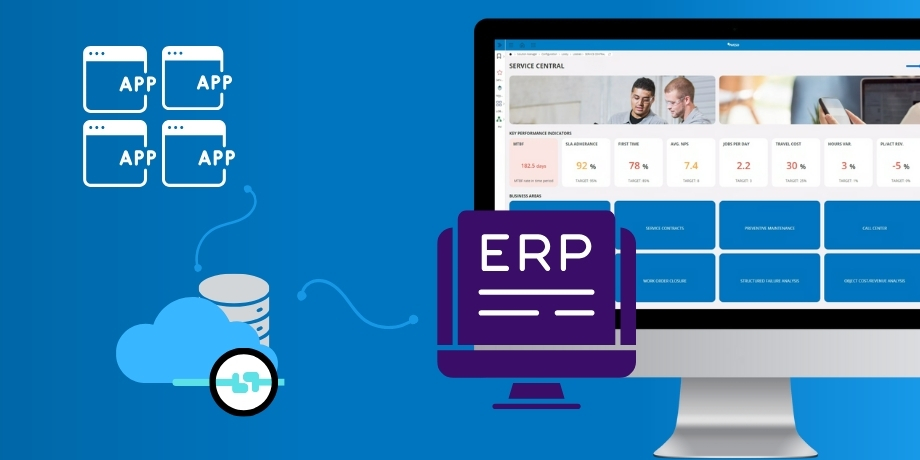Before and during an ERP project, many companies find themselves asking: how should integrations be implemented smartly, and who should take care of them? As application landscapes grow more complex, they play an increasingly critical role in the success of ERP implementations. Sometimes, modern ERP systems replace existing applications with their standard solutions—sometimes they don’t. There is no one-size-fits-all answer to how many applications a company “should” use. What matters more is understanding when it makes the most business sense to replace, integrate, or retain an existing solution.
Will ERP Replace All Systems?
At best, an ERP system can unify several functions under one roof, but it doesn’t have to replace every single application. Modern ERP systems like IFS offer comprehensive standard solutions and broad functionality—but they may still not cover every specific business need.
This leads to a key question: should business processes be adapted to fit the ERP’s logic, or should the ERP be customized to match current operations? The answer depends on the uniqueness of your business and the flexibility of the ERP system. Every customization comes with maintenance and upgrade costs—and sometimes those are well justified.
One App or a Hundred – Or Something In Between?
Few organizations can afford—or need—to go to either extreme. The best solution usually lies somewhere in the middle: the ERP handles broad and critical functions using standard features, while a carefully selected suite of supporting apps addresses specific needs.
Several factors influence this approach, including:
-
Unique business requirements: Can processes be changed or not?
-
Flexibility and scalability of the ERP system
-
Integration needs and quality: When are integrations truly necessary?
-
Staff expertise and training readiness: Is it worth replacing a familiar system if it requires full retraining?
-
Licensing costs: Simpler doesn’t always mean cheaper.
The Role of Integrations – and Why the Right Partner Matters
Everything can be integrated—but that doesn’t mean everything should be. Integrations introduce both technical and administrative demands, so careful need assessment is essential.
When integrations are required, their success heavily depends on how well the integration partner understands both the chosen ERP system and the integration platform in use. With experience comes smarter solutions—and the ability to avoid pitfalls in a multi-application environment.
Managing a Complex Application Landscape and the License Maze
A complex app environment requires proper governance. That’s why a centralized integration platform can bring significant clarity and efficiency. It’s also crucial to assess total licensing costs early on—sometimes integrating is more financially sound than replacing, and sometimes the opposite is true.
Summary: A Smart Whole Is Greater Than the Sum of Its Parts
A successful ERP integration strategy doesn’t happen by accident. It requires strategic decisions involving applications, integrations, staff capabilities, and costs. At its best, the outcome is a balanced combination of ERP strengths and tailored support apps—connected through a thoughtfully designed and well-managed integration architecture.
If you want to ensure your ERP project doesn’t stumble due to complex integrations or unrealistic expectations, start by asking the right questions and choosing a partner who understands both your business and the potential of technology.
